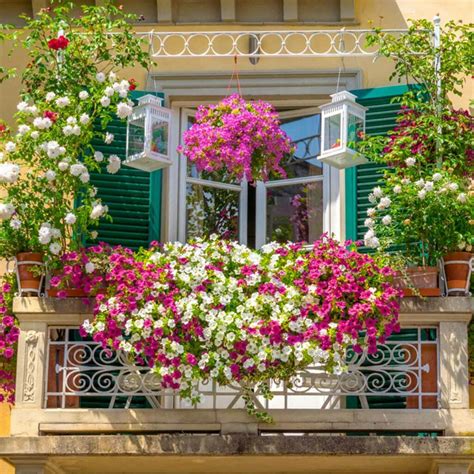Ultimate Guide to Year-Round Balcony Gardening: Essentials for Every Season
Balcony gardening offers a perfect way to embrace nature, even in urban settings. Whether you’re a seasoned green thumb or just beginning, balcony gardening provides endless opportunities for creating a green oasis in small spaces. This guide dives deep into the essentials for balcony gardening, covering techniques for every season, container gardening, plant care, and garden design. Whether you aim to grow herbs, flowers, or even vegetables, we will help you transform your balcony into a thriving garden all year round.
Key Concepts in Balcony Gardening
Balcony gardening focuses on growing plants in compact spaces, often utilizing container gardening and vertical structures to maximize the available area. The practice is part of the broader movement of urban gardening, which emphasizes sustainable and green living in city environments. Below are the key elements essential for success:
- Container gardening: Growing plants in pots or containers to suit small spaces.
- Seasonal planting: Adapting plant selections to changing weather conditions.
- Small space gardening: Strategies for using limited balcony space effectively.
- Plant care: Ensuring proper watering, soil selection, and fertilization for healthy plants.
- Garden design: Creative approaches to arranging plants for both aesthetic appeal and functionality.
Historical Context of Balcony Gardening
The idea of balcony gardening is not new. Historically, the concept of cultivating plants in containers can be traced back to ancient civilizations. In Egypt and Rome, plants were grown in vessels to adorn urban dwellings. The trend gained more attention with the rise of green living movements in the 20th century, especially in cities where space was limited.
Today, with the growing focus on sustainability and urban self-sufficiency, balcony gardening has become an essential part of modern urban lifestyles, allowing people to grow their own food and cultivate greenery, even in small apartments.
Current State of Balcony Gardening
In the current era, balcony gardening is a popular way to introduce greenery into compact urban spaces. It serves as a gateway for urban dwellers to practice green living while producing their own herbs, flowers, and small fruits or vegetables. Key factors influencing modern balcony gardening include:
- Climate adaptability: The use of innovative containers, which regulate temperature and moisture, allows balcony gardens to thrive year-round.
- Sustainability: Recycled containers, rainwater collection, and organic practices are now integral aspects of balcony gardening.
- Technological advancements: Smart irrigation systems and apps for plant care offer improved efficiency for balcony gardeners.
Practical Applications of Balcony Gardening
Here’s how you can implement balcony gardening essentials throughout the year:
| Season | Planting Tips | Container Suggestions |
|---|---|---|
| Spring | Begin with herbs like basil, parsley, and oregano, or flowering plants such as marigolds. | Use medium-sized containers that provide room for root expansion and ensure good drainage. |
| Summer | Plant tomatoes, cucumbers, and peppers in larger pots or grow bags. | Opt for containers with water reservoirs to prevent drought stress. |
| Autumn | Grow cool-season crops such as lettuce, spinach, and kale. | Use shallow, wide containers for quick-growing leafy greens. |
| Winter | Focus on hardy plants like rosemary, thyme, and succulents. | Choose frost-resistant containers and consider insulating them. |
Case Studies: Successful Balcony Gardens
Several balcony gardens have become models for urban gardeners. Take, for example, a small 10×10-foot balcony in Brooklyn that houses an impressive mix of vegetables and herbs, demonstrating that you don’t need much space to achieve high productivity. In Tokyo, a vertical balcony garden was created using repurposed shelves to grow dozens of plant varieties in a limited space.
Stakeholder Analysis in Balcony Gardening
The major stakeholders in balcony gardening include urban dwellers, city governments, environmental organizations, and businesses involved in gardening supplies. Each group benefits from the practice:
- Urban dwellers: Get access to fresh produce and an aesthetic green space.
- City governments: Support green initiatives that contribute to environmental sustainability and urban beautification.
- Environmental organizations: Promote balcony gardening as a way to reduce carbon footprints and combat urban heat islands.
- Businesses: Suppliers of containers, seeds, and gardening tools see growing demand from city gardeners.
Implementation Guidelines for Year-Round Balcony Gardening
- Start by assessing your balcony’s microclimate—observe how much sunlight your space receives.
- Choose the right containers. Ensure they provide proper drainage and insulation.
- Match plants to the season, selecting cold-hardy varieties in winter and heat-tolerant plants in summer.
- Implement a watering schedule based on your plant varieties and climate conditions. Consider installing a drip irrigation system for consistent moisture control.
- Use organic fertilizers to nourish your plants and boost their resistance to pests.
- Plan for vertical gardening solutions to maximize space by utilizing trellises or wall-mounted planters.
Ethical Considerations in Balcony Gardening
While balcony gardening promotes sustainability, ethical considerations must also be addressed. For instance, the excessive use of plastic containers contributes to environmental waste. Ethical balcony gardeners should focus on using biodegradable or recyclable materials and aim to reduce water waste by implementing efficient irrigation methods.
Limitations and Future Research
Despite the growing popularity of balcony gardening, limitations remain. Factors like limited sunlight, space constraints, and exposure to pollutants can impact the success of balcony gardens. Future research should focus on developing more resilient plant varieties that thrive in urban microclimates and designing innovative containers that better regulate water and temperature conditions.
Expert Commentary
Balcony gardening is an evolving practice, with each season presenting new challenges and opportunities. Experts emphasize the importance of selecting the right plant varieties, optimizing container usage, and staying consistent with plant care throughout the year. For beginner gardeners, it’s essential to start small, experiment with a few easy-to-grow plants, and gradually expand the garden as skills develop. For more advanced practitioners, the focus should shift to maximizing yield and exploring creative design solutions to beautify small spaces.


